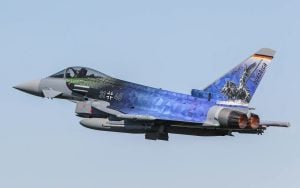Logarithms are an essential mathematical concept that often appear in competitive exams, including the National Defence Academy and Naval Academy (NDA-NA) Exam – Paper I. A recent class focused on logarithms, explaining its fundamental definition, properties, and practical applications. In this blog, we will cover the key topics discussed during the session, offer strategies for effective preparation, and provide tips to help you approach logarithm-based questions with confidence in the NDA-NA exam.
Overview of Logarithms: What Was Covered in the Class?
The class began with a detailed introduction to logarithms, ensuring that students understood the core concept before diving into more advanced topics. Here’s a summary of the main sub-topics covered during the session:
Definition of Logarithms
A logarithm is a mathematical function that helps us determine how many times a certain number (known as the base) must be multiplied to obtain another number. This fundamental definition sets the stage for understanding the various properties and applications of logarithms.
The class simplified this concept by breaking down the relationship between exponents and logarithms. Essentially, logarithms reverse the process of exponentiation. This inverse relationship was central to many exercises and questions discussed during the session.
Properties of Logarithms
One of the most important aspects of logarithms is their properties, which make calculations more manageable, especially when dealing with large numbers. The instructor focused on the following key properties:
- Product Property: This property allows us to break down the logarithm of a product into the sum of logarithms. It is particularly useful when simplifying expressions involving multiplication.
- Quotient Property: Similarly, the logarithm of a quotient can be simplified into the difference between two logarithms. This property becomes handy when dealing with division in logarithmic expressions.
- Power Property: When a logarithm involves a power, the exponent can be brought in front of the logarithmic function. This makes complex logarithmic expressions easier to solve.
- Change of Base Property: This property allows us to convert a logarithm with one base to another base, which is often necessary for solving certain types of problems where the base is not easily recognizable or manageable.
These properties were explained in a clear and structured manner, with examples demonstrating how to apply them to simplify expressions and solve equations.
Types of Logarithms
The class also discussed different types of logarithms based on their base, which are commonly used in the NDA-NA exam:
- Common Logarithms: These are logarithms with base 10 and are often used in real-life calculations, such as in scientific and engineering contexts. The instructor pointed out that these types of logarithms are frequently seen in exam questions, so students should be comfortable working with them.
- Natural Logarithms: These logarithms have base “e” (Euler’s number) and are widely used in calculus and higher mathematics. While natural logarithms are more prominent in advanced math, understanding them is essential for solving problems related to growth and decay, which may appear in the NDA-NA exam.
- Binary Logarithms: Though less common in NDA-NA exams, the class briefly touched on binary logarithms (base 2), often used in computer science. Knowing the basics of binary logarithms can be helpful if you encounter related questions in the exam.
Strategies for Preparing Logarithms for the NDA-NA Exam
Logarithms are a scoring topic in the NDA-NA exam if you master the fundamentals and practice consistently. Here are some preparation strategies to help you excel in logarithm-based questions:
1. Master the Core Concepts
- Understanding the basic definition of logarithms and the relationship between logarithms and exponents is crucial. Ensure you are comfortable with switching between exponential and logarithmic forms, as many questions in the NDA-NA exam require this skill.
2. Learn and Practice Key Properties
- Logarithmic properties are the foundation for solving complex questions. Memorize the product, quotient, and power properties, and practice applying them to simplify logarithmic expressions. You should be able to recognize when and how to use these properties without hesitation.
3. Solve Different Types of Problems
- Logarithmic questions in the NDA-NA exam may involve evaluating logarithmic expressions, solving logarithmic equations, or applying logarithms in real-world contexts. Familiarize yourself with these different types of problems by solving a variety of practice questions.
4. Work on Logarithmic Inequalities
- Some questions might involve inequalities with logarithms. In these cases, understanding how the base of the logarithm affects the inequality (whether it’s greater than or less than) is key to solving the problem. Be sure to practice these types of questions to strengthen your grasp.
5. Focus on Logarithmic Equations
- Logarithmic equations can seem challenging, but they become easier once you master the properties of logarithms. Make sure you practice solving these equations by isolating the logarithmic term and converting the equation into exponential form when necessary.
6. Use Graphical Representation
- Visualizing logarithmic functions on a graph can provide a deeper understanding of the behavior of logarithms. Although graph-based questions are less common in the NDA-NA exam, knowing the shape and characteristics of logarithmic curves can help answer conceptual questions.
7. Memorize Common Logarithmic Values
- While you don’t need to memorize extensive logarithmic tables, knowing the logarithms of common numbers (like 2, 3, and 10) can speed up your calculations. These values often appear in multiple-choice questions, and having them at your fingertips can save valuable time.
8. Take Mock Tests
- Practicing with mock tests under timed conditions is a critical step in your preparation. It helps you identify areas where you may be struggling and allows you to improve your speed and accuracy. After each test, review the logarithmic questions carefully and understand any mistakes you made.
9. Review Past NDA-NA Exam Papers
- Reviewing previous years’ papers will give you a good sense of the type of logarithmic questions that typically appear in the exam. Focus on understanding the pattern and difficulty level of the questions so that you can tailor your preparation accordingly.
10. Use Shortcuts and Tricks
- While understanding the concepts is important, learning a few shortcuts or tricks can also help you save time on the exam. For example, knowing how to quickly simplify logarithmic expressions or recognize patterns in logarithmic equations can be a game-changer.
Common Mistakes to Avoid
During the class, the instructor pointed out some common mistakes students make when dealing with logarithms. Here’s a quick reminder of what to avoid:
- Confusing Properties: One of the most frequent mistakes is mixing up the product and quotient properties. Be clear on when to add or subtract logarithms, depending on the operation (multiplication or division).
- Ignoring the Base: Sometimes students forget to check the base of the logarithm, which is critical for solving the problem correctly. Always pay attention to whether the base is 10, e, or another number.
- Misinterpreting Logarithmic Equations: When solving logarithmic equations, students often struggle with converting between logarithmic and exponential forms. Ensure you practice this conversion thoroughly.
- Overlooking Domain Restrictions: Remember that logarithmic functions are only defined for positive numbers. When solving equations or inequalities, keep in mind the domain restrictions to avoid incorrect answers.
Conclusion
Logarithms may seem daunting at first, but with a solid understanding of their properties and consistent practice, they can become one of the most manageable topics in the NDA-NA exam. The recent class provided a comprehensive overview of logarithms, focusing on their definition, properties, and practical applications, which are all essential for solving exam-level questions.
By mastering the core concepts, practicing a variety of problem types, and learning efficient strategies, you can confidently tackle logarithmic questions in the NDA-NA exam. Remember to avoid common mistakes, use mock tests to gauge your progress, and review past exam papers to understand the question pattern. With consistent effort and a strategic approach, you’ll be well-prepared to excel in this section of the exam.



















